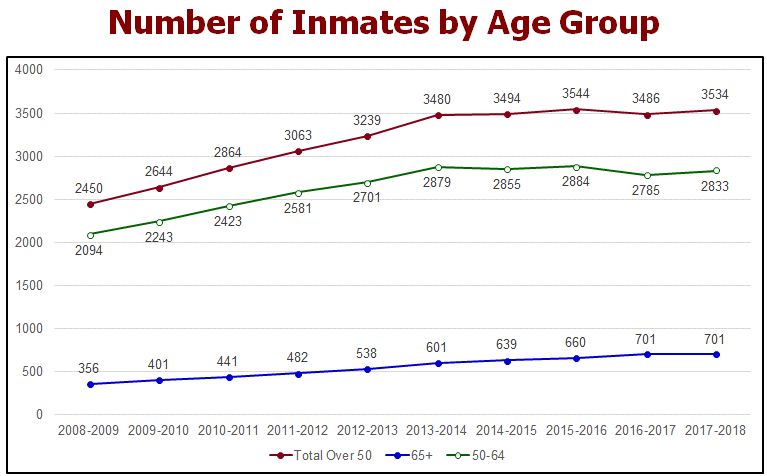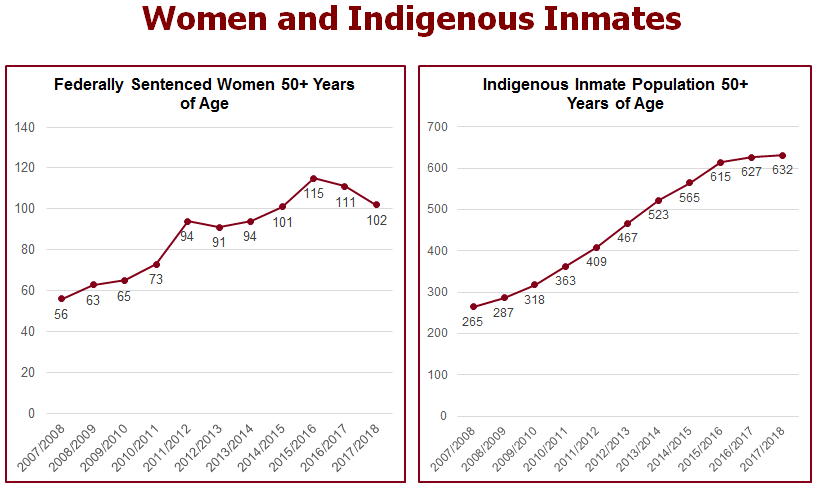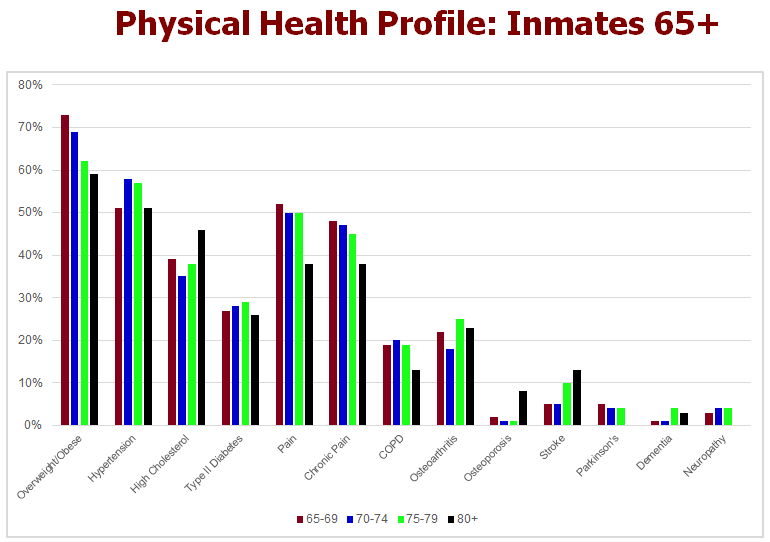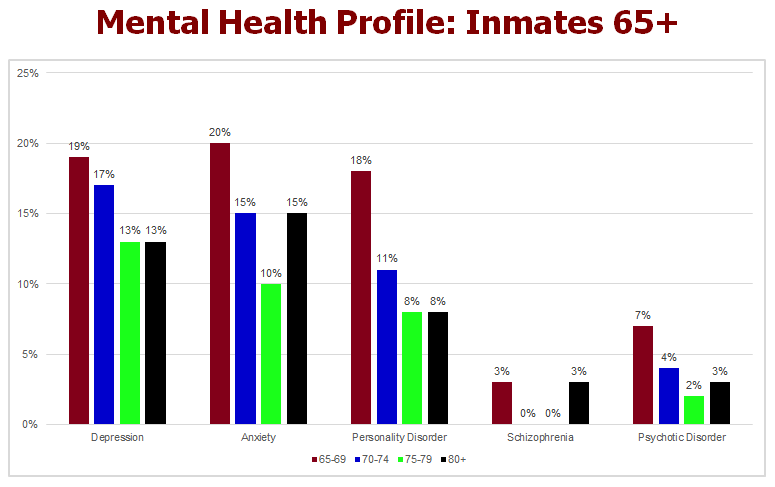Body
February 28, 2019
A Joint Investigation by the Office of the Correctional Investigator and the Canadian Human Rights Commission
Overview
- Purpose and Methodology
- Background
- Findings
- Recommendations
Why We Conducted this Investigation
- Give voice to the issues and concerns of older offenders whose needs, rights and dignity are not adequately recognized or protected.
- The CSC has made little progress in implementing recommendations – there is still no national strategy for aging offenders.
- Individual cases that have come to the attention of the Office.
What We Did
- The investigation was conducted jointly with the Canadian Human Rights Commission.
- Confidential interviews and site visits:
- 250 older individuals (men: 210 and women: 40)
- 18 inmate caregivers
- 12 older individuals residing in a non-CSC halfway house (men: 6, women: 6).
- 41 CSC staff members, 14 staff working at non-CSC halfway houses
- Literature review and statistical data analysis
- A review and assessment of CSC research, policy, services and interventions
- Review of international best practices
The ‘Grey’ Wave in Corrections
Population Drivers
- Aging Canadian population.
- Growing ‘lifer’ population:
- 1 in 4 inmates are serving a life sentence.
- Age at admission is increasing.
- Median age at admission to federal custody is 34 and median age of incarcerated population is 38.
- More individuals are being sentenced later in life often as a result of historical (sexual) offences.




8 Major Findings
- A significant number of older, long-serving federally sentenced offenders are being warehoused well past their parole eligibility dates.
- There is no legal or policy recognition that older individuals represent a vulnerable population in prison or that they have unique characteristics, needs and rights which must be respected and met.
- The physical infrastructure of institutions does not adequately meet the needs of older individuals in federal custody.
- Correctional health care costs are rising as the number of aging individuals in federal custody with chronic disease increases.
- Prison is no place for a person who requires end-of-life care.
- Federal corrections lacks adequate, compassionate and responsive release options for older individuals in federal custody who do not pose an undue risk to public safety.
- Community alternatives are lacking and are not well resourced.
- There is a clear need for an integrated, comprehensive and funded National Older Offender Strategy.
16 Recommendations
- Conduct an independent review of all older individuals in federal custody with the objective of determining whether a placement in the community would be more appropriate.
- CSC develop a separate and distinct Commissioner’s Directive specific to older individuals.
- CSC provide staff with training in age-related needs.
- CSC re-examine its use of force training and policy to incorporate best practices and lessons-learned.
- CSC offer appropriate work options for older individuals who want to and can continue working.
- CSC professional health care staff monitor vulnerable populations (older offenders and those with mental and/or physical health issues) be monitored daily during lockdowns by professional health care staff.
- Designate facilities for older individuals who want to live in such areas—and that such facilities are designed or retrofitted to ensure physical accessibility.
- Create dedicated spaces and times where older individuals can assemble and socialize during institutional working hours, and allow them access to communal prison services during working hours.
- We recommend that social programs staff organize age-appropriate and disability-appropriate leisure, wellness and recreational opportunities.
- Introduce standardized peer assistance and peer support programs across all institutions.
- CSC and the Parole Board be required to use proactive and coordinated case management to facilitate the offender’s safe and compassionate release to the community as early as possible.
- The Minister of Public Safety review and assess release options (e.g. medical and/or geriatric parole) for older posing no undue risk to public safety, and propose legislative amendments.
- Release planning for older offenders include retirement financial planning, and the management of personal affairs.
- CSC enhance partnerships with outside service providers and reallocate funds to create additional bed space in the community.
- CSC fund and implement an integrated and comprehensive National Older Offender Strategy immediately.
- We recommend that CSC significantly reallocate existing institutional resources to community corrections.
Date modified
2019-02-28
Banner Image

